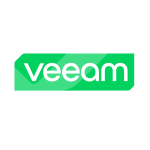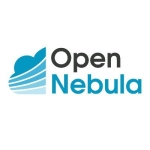What is our primary use case?
Our primary use case is capacity planning. We do historical metrics gathering to determine if we need to rearrange our hardware resources, expand or contract them.
How has it helped my organization?
I like that it's integrated with the vRA. It is helping us, as we're rolling out automation, to do intelligent placement of new servers, based on the vROps metrics that are being created.
What is most valuable?
They've come up with more canned dashboards, which is great.
Also, it does have hooks into it. I like that it's integrated with the other suite of tools. That's a big plus for the tool. It's well-integrated with Log Insight. We use that integration quite a bit.
What needs improvement?
There are several additional features I'd like to see.
For one, the metrics. It collects tons of metrics, but it's very unclear what exactly a metric is. There'll be something like a "CPU Usage" and "Usage of the CPU". What's the difference between those two metrics? It turns out there is a difference, but they should make it intuitive so I can say, “I just want to go find this out in the tool.” You can't really do that because you've ended up spending a lot of time creating a report against a metric which wasn't the metric that you thought it was. So I would like to see, when I have the metrics in any of the screens, when I hover over one, that it pop up at least a sentence, if not a paragraph, saying what the metric is and not just that it's the measurement of the CPU. It should say how it's collecting that metric and what the importance is of that metric. That would be very helpful.
Also, there are some metrics that are not included in the canned set. They call them super metrics in the tool, where you create your own metric. But the super metrics are not really reliable. It might be because we didn't create them correctly, although we did have help from VMware. They also don't translate into newer versions like a canned metric would. One of them is a vCPU to pCPU ratio. That's one that is missing, which should be very simple for them to collect.
So the help on the metrics is super important because there are so many.
It's a little bit too extensible. I love having that freedom to create. But I, and maybe three other people, understand the math enough to be able to use it. Everybody else says, “But where do I click to get that report?"
The other thing is, when we first bought it, our vision was to use role-based access, give application teams access to view a dashboard for their stuff. We found out that the vROps tool can't handle more than about 20 concurrent sessions. For a company our size, we have some 3000 applications. If all these application teams want to have a dashboard up, that somebody is monitoring all day - we had to say nobody gets that because then everybody wants it. That was another thing that we were buying the tool for that we can't do.
What do I think about the stability of the solution?
On a specific version, it has been stable. But the whole point of the tool is historical data and, twice now, we have lost all of our historical data, as we've tried to move to the next version of the tool. That really removes a lot of the functionality that we purchased the tool for.
What do I think about the scalability of the solution?
The tool itself is not as scalable as we'd like it to be. We have seven or more data centers and we have collectors deployed throughout the whole environment, but we have capacity and performance issues with the tool. We'd like to expand the product so that we would have more capacity, but it has limitations.
How is customer service and technical support?
We're a large customer and we have people onsite holding our hand saying, “Sorry. My bad." I think we could have better technical support on this product. We have great technical support on other fronts.
How was the initial setup?
The initial setup was pretty straightforward.
What's my experience with pricing, setup cost, and licensing?
Pricing is starting to get unmanageable. It used to be a better pricing deal. They were selling us the suite and we were taking advantage of most everything in that suite.
Something that we're concerned about was in the general session this morning, here at VMworld 2018. They announced the Premier. It's going to be interesting.
I'm just about ready to send our sales person a text, because we've been VMware shop for a decade and we bought the Enterprise-class license, which was the top-of-the-line, "get everything they have," and we thought we had everything they had. And then they came out with Enterprise Plus. That meant we had to go buy a whole bunch more stuff to convert everything to Enterprise Plus. Well, now they have come out with Premier. They're going to be giving us all sorts of reasons why we need to re-buy everything up to the Premier level. That's getting old with our people with the purses, the supply chain people. That's why they're looking at other options. They just went and bought Turbonomic and they're looking at other options so that we're not so wholly a VMware shop.
From an operations point of view and from an architectural point of view, which is me, it's great to get a whole mess of tools that all integrate together; we've got Lifecycle Manager so that we can make sure they're all at the right versions at the same time. But, on the other hand, you become a one-vendor shop. Nobody likes that. Our leadership is starting to bring in other companies to do various things.
Which other solutions did I evaluate?
We looked at a couple of other products. We looked at Turbonomic and Veeam. But we have a very large relationship with VMware, so we have a hefty discount. We are also very involved with using Log Insight and with using vRA. So we buy the suite and vROps is free. It would cost us more to buy those other tools individually. Since we have the suite, we have the licenses so it makes sense to use it.
That being said, we did buy Turbonomic about a month ago because operations management says vROps is not working for us for the real-time monitoring and automatically adjusting to the environment. vROps is working for historical work, so are still planning on using it for that. Turbonomic does not have historical, so they work together in a way. But We've had to buy, for a few more million dollars, another product whose function, we thought, vROps was going to do all of.
What other advice do I have?
Depending on your use case, I would caution you to know what it does and what it doesn't do. We bought it with pie-in-the-sky hopes that it would really solve everything.
For this product in particular, it just doesn't seem that it was enterprise-ready for a company of our scale, when we tried to adopt it. It's been going through a lot of changes now. I haven't been as involved in the last year with it but I know that they've moved up another rev in the versioning and, of course, everything gets better with each rev. But it was a rocky start for us.
We're still using it and we still have hopes. We're not going to give it to the application teams, but we might give them a scheduled report that at least gives them a non-instantaneous look at their systems.
Disclosure: I am a real user, and this review is based on my own experience and opinions.















